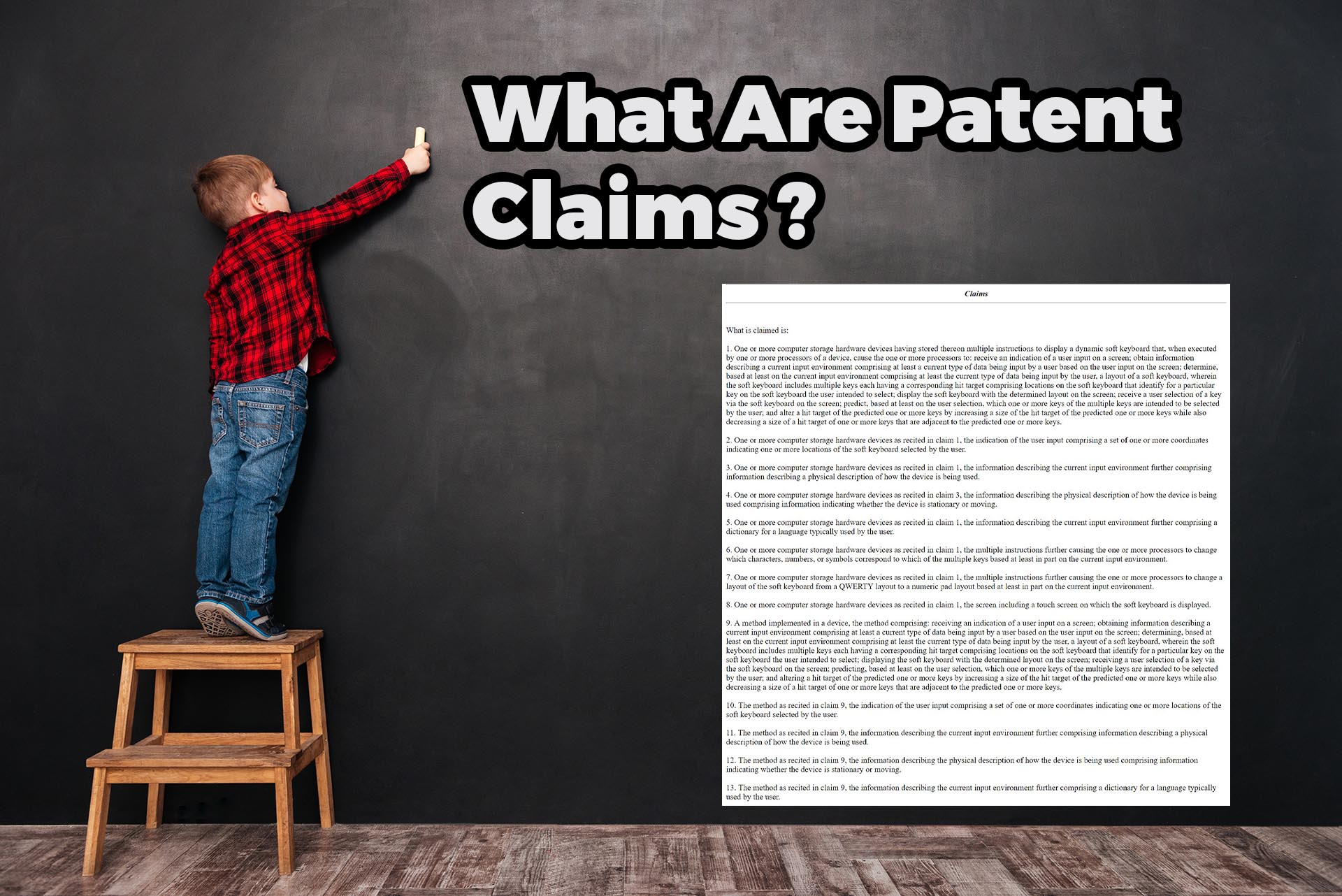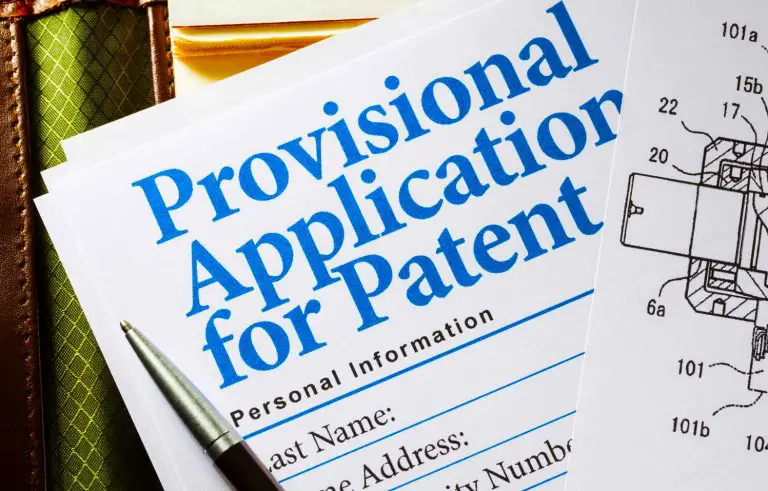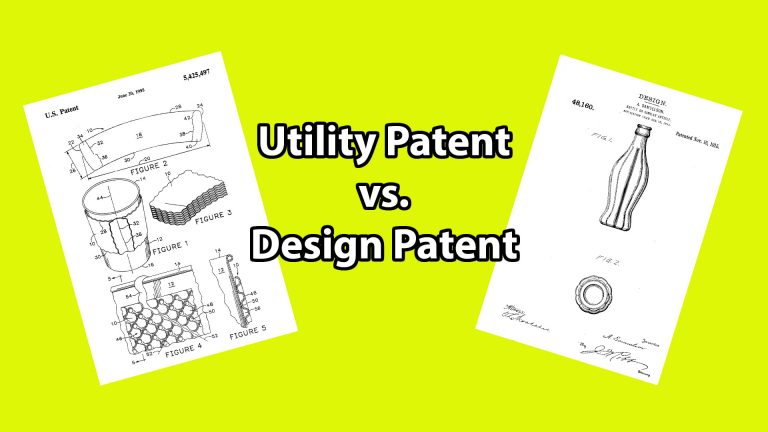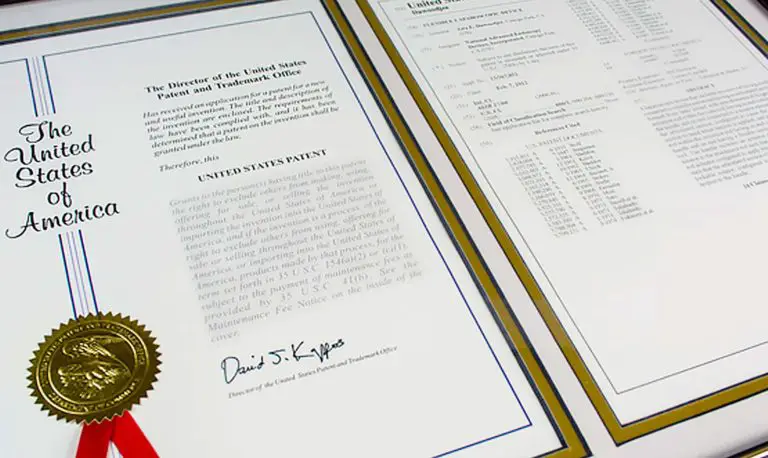What are Patent Claims?
What Are Patent Claims?
Patent claims are arguably the most important part of a patent application. Patent claims set out the aspects of the invention that the patent protects. Patent claims set the scope of protection for the invention described in the patent, this serves to inform others of what they can and cannot do with the patented invention.
Patent claims define and set the scope for what a patent holder can stop others from doing with his patented invention.
For example, if someone were working on an invention to make a new pair of nail clippers, reading the patent claims of other nail clippers shows them what others have already patented so that they can invent something different that does not infringe upon patented inventions.
Patents grant inventors the right to stop others from using, making, selling, and importing the patented invention to the United States without the patent holder’s express permission. So, to ensure that an inventor does not infringe upon the patent of another, he must look to the patent claims of other similar patents. This allows the inventor to avoid using or copying what patented inventions claim.
If an inventor’s invention infringes upon a patent holder’s invention, the patent holder may enforce his patent rights by bringing a lawsuit for patent infringement against the infringing party. To show patent infringement, a patent holder must show that a party copied all of the elements of a single patent claim.
If the patent holder is successful in doing so, he may be able to obtain an injunction to stop the infringing party from performing its infringing activities, he may also recover monetary damages to compensate him for patent infringement.
What’s the Purpose of Patent Claims?
The purpose of patent claims is to set the scope of an invention. That is, a patent claims set out the scope of protection for a patent. A patent claim is similar to the description of a piece of land in that it sets out what the patent protects just as a deed for a piece of land sets out and identifies the piece of land it protects.
Once the patent office grants a patent application, the patent holder will be able to stop others from using, making, and selling the invention claimed in the patent holder’s patent. Patents allow inventors to exclude others from using, making, and selling the patented invention for a limited period of time. For utility patents, this period of time lasts for 20 years, while for design patents, this period of time lasts for 15 years.
That said, patent claims are not included in a patent application to describe the invention, how it works, or how it’s used. It’s the job of the patent description, as well as patent drawings to assist the patent examiner and the public to understand how to make the invention, as well as how to use it.
Types of Patent Claims
There are two main types of patent claims and they are: independent claims and dependent claims. An independent claim is a patent claim that does not refer to any other claims and stands on its own. A dependent claim, on the other hand, depends on and refers to another claim and incorporates the entire claim or part of the claim by reference.
Typically, a patent application starts with Claim #1, which is the broadest claim in scope, with subsequent claims, such as Claim#2 and so on being narrower in scope.
What is an Independent Patent Claim?
An independent patent claim is a claim that stands on its own. Dependent claims typically refer to an independent claim, adding to the details and features of an independent claim. Independent claims are the broadest claims of a patent application with dependent claims being narrower in scope to illustrate the possible variations of an invention.
That said, independent claims can stand on their own, but dependent claims typically refer back to an independent claim, by referencing an independent claim or incorporating its language.
Example of Independent and Dependent Patent Claims
- A method comprising steps X, Y, and Z
- The method of claim 1, further comprising step A
- The method of claim, further comprising step D
In this example, Claim #1 is an independent claim because it does not reference any other claims. Claims #2 and Claim #3 are dependent claims because they reference Claim #1.
Special Types of Patent Claims
Jepson Patent Claims
A Jepson claim can typically be identified by looking at its components. A Jepson claims usually starts with a preamble that begins with the word “in” and ends with “an improvement comprising of.” Jepson claims are usually used in the context of patenting an improvement to an already existing patent. Jepson claims usually makes a statement about prior art and then states how the improvement claimed by the current invention improves the prior art.
That said, we encourage anyone using Jepson claims to use them cautiously. This is so because, like with criminal matters, anything you state in your patent application can be used against you, either by the patent examiner or by other parties seeking to invalidate your patent. So, as a word of caution, don’t include anything in your patent application, amendments, or changes to the patent application that you don’t want others to know, because once you submit something, you cannot undo it.
Markush Patent Claims
Markush patent claims are used by applicants to identify a group of elements that can be selected from a list of elements that offer the same utility to the invention. Said differently, a Markush claim allows an applicant to select an element of an invention that can be substituted with different elements that share a common characteristic.
For example, a Marksuh group specifies alternatives in a patent claim by stating something like “a group that consists of X, Y, and Z.” This signifies that either X,Y, or Z, which are members of the Markush group are alternatives that can be used for the invention described in the patent application.
Markush claims are beneficial for inventors because they reduce the number of claims that a patent application drafter has to make. This allows the inventor to avoid paying extra fees for including more than 20 claims. This is so because the USPTO charges applicants who include more than 20 claims to pay additional fees to make such an inclusion.
That said, one of the drawbacks of including a Markush claim is that courts usually construe Markush groups as being closed one, prohibiting applicants from claiming unlisted elements as part of the claim. To avoid limiting the scope of a claim, drafters should avoid limiting and closed language to leave the claims open to a somewhat broader interpretation.
Interpreting Patent Claims For Patent Infringement
If a patent holder brings a lawsuit against a party (defendant) for patent infringement, the court will look at the claims of the patent holder’s invention and then compares them to the product or invention that the patent holder claims infringes upon his patent.
If the court determines that the defendant’s product or invention incorporates all of the elements of a claim from the patent holder’s invention, the defendant will be liable for patent infringement.
If the court finds patent infringement, the court may grant the patent holder an injunction to stop the defendant from using or making the patent invention.
The court may also award the patent holder damages for lost profits or reasonable royalties for the defendant’s use or sale of his invention.
Patent Claim Advantages & Disadvantages
Patent claims are advantages to inventors because they lay out the scope of protection for an invention. To have a stronger patent, patent holders should hire an experienced patent attorney to draft their claims as broadly as possible to obtain the best patent protection. Although patent claims should be specific enough to accurately describe an invention, drafting claims too narrowly reduces the scope of patent protection.
Frequently Asked Questions
1) Should you draft patent claims yourself?
Patent applicants who do not have experience drafting patent applications should not draft patent claims themselves. Drafting patent claims is an art that should be left to professionals, such as patent attorneys and patent agents who have experience drafting patent claims to obtain the best patent protection possible for their clients.
2) What type of claim should your application start with?
If you’re drafting a patent application, you should start with the broadest claim possible and then move down with narrower and narrower claims.
3) What is a patent claim infringement?
Patent claim infringement is a form of a lawsuit that is brought by a patent holder against a party that infringes upon his patent. Patent infringement lawsuits are brought in federal district court. For a patent holder to recover damages and/or obtain an injunction against an infringer, a patent holder must show that the infringer’s product or invention incorporates all of the elements of a claim that the patent holder has patented.
Patent Claims
At this point, you should know that patent claims are the backbone of a patent application. They set out the scope of protection that a patent holder has over his invention. If you’re someone who’s working on an invention, you should search patents in the field of your invention to ensure that your invention functions differently from any other patent invention. You can do this by looking at the patent claims of an invention. You can find patent applications by conducting a patent search, using the USPTO patent database. If you have any general questions or comments, please feel free to leave them in the comments section below.








